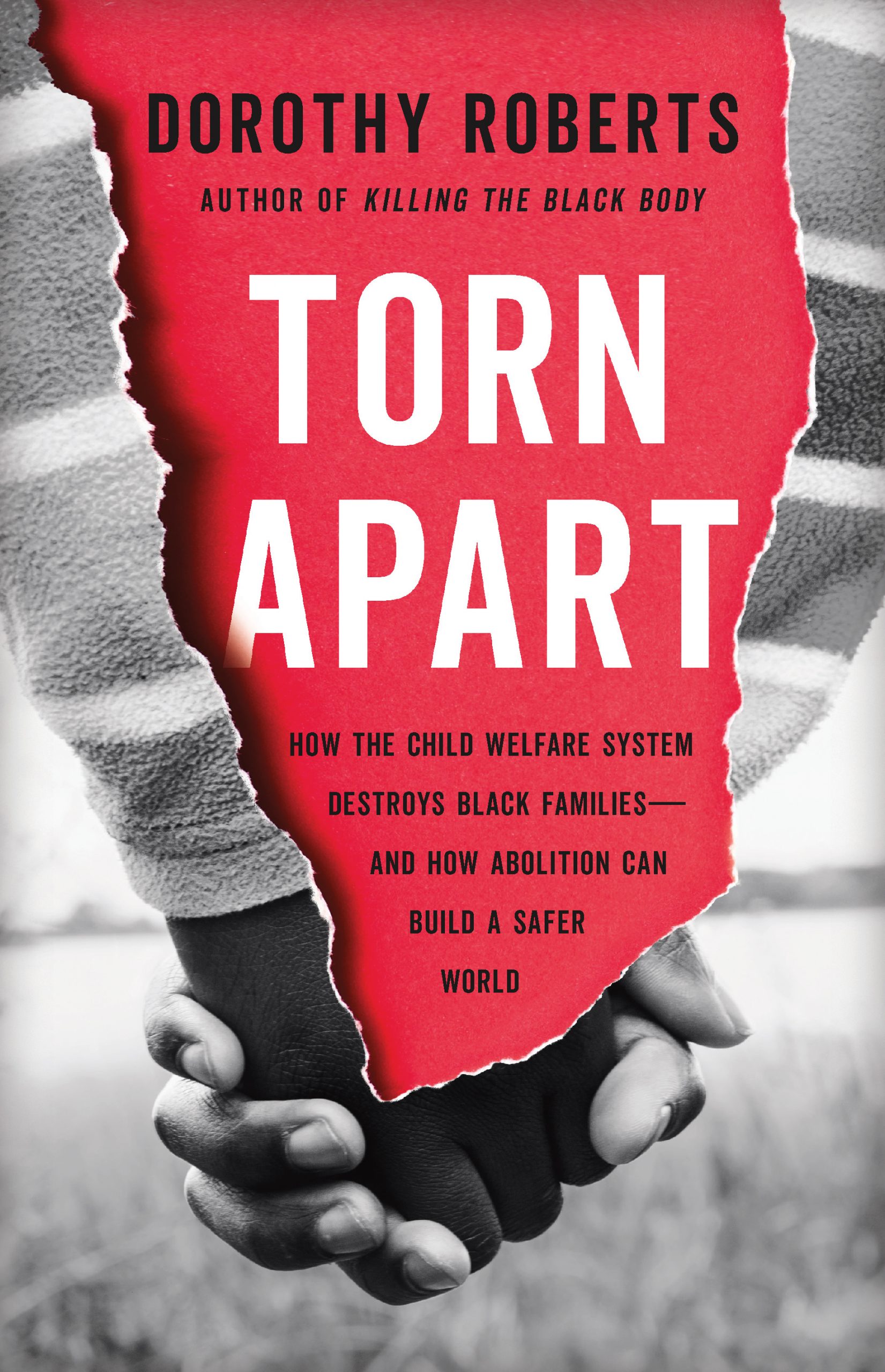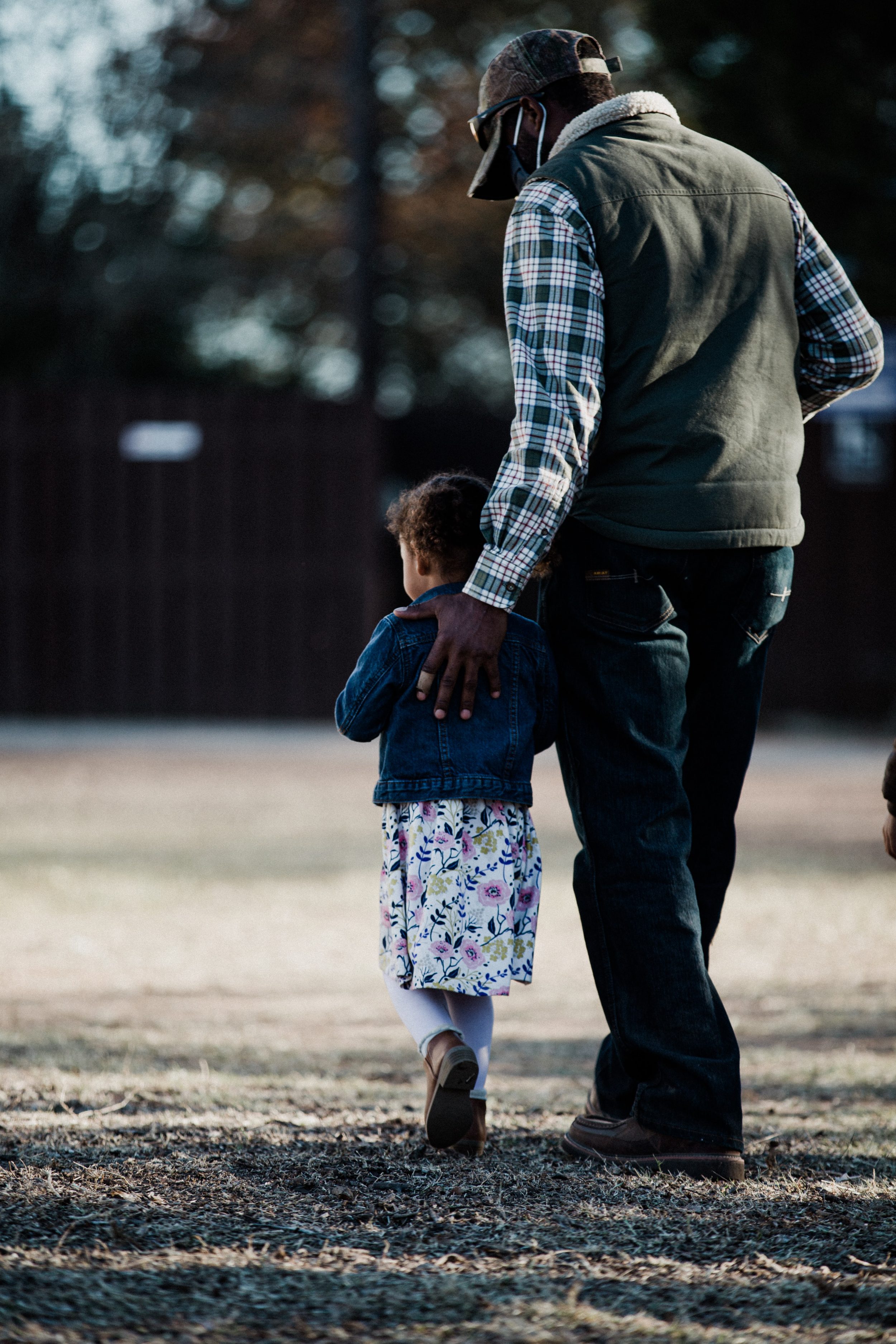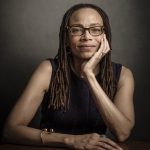The idea for Torn Apart emerged from decades of work on reproductive justice and child welfare law and policy. Back in the late 1980s, I was doing research on the regulation, punishment, and criminalization of pregnancy, especially the childbearing of Black women. I was working and being an activist against the prosecutions of Black women for being pregnant and using drugs, and that was my initial entry into this field, which really ties together abolitionist organizing against the war on drugs, against the prison industrial complex, and against family policing. But back then, it was inspired by wanting to contest those prosecutions, which led to my writing my book, Killing the Black Body, published in 1997.
In the course of doing that work, I became aware of the massive removal of newborns from Black women who had tested positive for drugs. This was right at the time when this myth of the “crack baby” was being promoted by doctors and journalists and some policymakers. That myth fueled not only prosecutions, but on a wider scale to the state taking newborn babies from thousands and thousands of Black mothers. That led me to look into this system, and I realized, being in Chicago at the time, that virtually all the children in this system were Black children, as were the family caregivers. I was shocked that there wasn’t more of an outcry against it, when it was so clearly a racist, punitive system that targeted Black communities and separated families.
As I as soon as I stepped into family court in Chicago, I could see it. And so I started doing research on it. I started meeting with Black mothers in Chicago whose children had been taken from them and were beginning to organize against it. These insights became a book that was published in 2001, Shattered Bonds: The Color of Child Welfare, where I documented that Black communities were being targeted — and made the argument that this was a white supremacist policy. And I used the word abolition: I said that the system should be abolished. But this was before I had a clearer sense of what abolition meant. I had more of an idea that this system could be reformed. In fact, I engaged in a number of reform efforts over the course of the next 20 years, including working intensively on trying to reform the foster care system in Washington state: I was appointed to a group of five experts in charge of implementing a class-action settlement there where a judge had found that the foster care system violated the constitutional rights of children in the state, along with many other kinds of reform efforts.

In the last decade, I became more disenchanted with these reform efforts, which were geared toward reducing the numbers of Black children in the system. Or sometimes not even reducing their numbers but reducing the disparities between the number of Black children and white children taken from their homes while still taking away large numbers of children. Or having more so-called services for families who are threatened with their children being taken away. As I realized that the very foundational logic of this system was oppressive and was designed to be oppressive, and as I learned more about abolitionist organizing around the prison-industrial complex and understood those theories and ideas and forms of activism and organizing, I grew to understand that this was a system of family policing, through and through. That it was designed and still operates to oppress marginalized communities, especially Black and Indigenous communities. That it still operates that way, and that it cannot be fixed.
I also learned about efforts to replace carceral logics and systems with better approaches — more just, humane, caring approaches that would keep children safer and support families better than what we have now. That’s why when the 20th anniversary of Shattered Bonds came along last year, and I had been encouraged to write a new preface for it, I decided I needed to write a completely new book that not only updated what had happened over those 20 years, but made a stronger case for abolition. And that’s how Torn Apart came to be.
There is this very effective propaganda that has upheld the so-called child welfare system for centuries focused on how it is a system that “rescues” children from abuse in their homes. Originally, the idea supporting the system was that it was a charitable, benevolent service that saved impoverished white children from their homes. Since the 1960s, however, it has evolved into a narrative that it’s a system that rescues abused children from their homes. And the narrative has increasingly shifted from rescuing children by benevolent removal to also protecting them by keeping tabs on their parents or ending relationships with pathological parents so that the children can be placed for adoption.
That narrative is false in a number of ways. First of all, it completely ignores how this approach to children’s welfare — this punitive, violent approach to protecting children — has its roots in slavery. And in the post-Civil War attempts by white supremacist to re-enslave Black people. And in the U.S. government’s wars of genocide against Indigenous people. To really understand how the system operates today, you’d have to go back to the enslavement of Black people and the critical aspect of family separation — the idea that enslavers not only legally owned adults, but also legally owned their children from the moment of conception and could separate them at will from their parents. Family separation was an integral part of the slavery system. And it was enforced by law. It was often court-ordered on auction blocks, and it was one of the features of enslavement that enslaved people fought against the most and pointed to as one of the greatest evils of slavery.
When the Civil War ended, there was a massive backlash of white supremacists in the South who wanted to reinstate their power. And one of the ways they reinstated their power, which prison abolitionists have highlighted, was the Black codes that allowed for police to arrest Black people for everyday activities — and put them on chain gangs and lease them out to work for corporations like railroads and coal mines. At the same time, the same Black codes allowed for the use of the apprenticeship system, where judges would declare that Black parents were unfit or negligent, and then apprentice their children out to former enslavers — sometimes their own former enslavers. This happened to many thousands of children in the South after the Civil War. That part of the roots of the system are rarely talked about. They’re definitely not part of the propagandist narrative of the benevolent child welfare system.
At the same time, in the 1800s, the U.S. military was using family separation and the massive removal of Native children from their tribes as a literal weapon of war with them, which then morphed into an adoption program — an official program of the U.S. government — to take Native children from their homes and tribes and get them adopted into white families. And then even the part of the narrative about charitable organizations rescuing white European immigrant children from poverty tends to leave out that they were placed in foster homes, where they were often abused and forced to work and put on so-called “orphan trains,” where they were shipped out from Eastern cities to the Midwest and the Southwest to work on strangers’ farms. Those are some of the historical inaccuracies of and omissions from the narrative.
The idea that this is a system designed to protect children is false.
The idea that this is a system designed to protect children is false. The reality is that it is a multibillion-dollar industry that relies on private corporations as well as massive state bureaucracies to threaten the families in the most marginalized communities in America — the same communities where we find the greatest amount of police involvement, the greatest amount of incarceration, the greatest amount of poverty. The system relies on threatening these communities with taking their children away or actually removing children as a false answer to children’s needs. The narrative that they are rescuing children from extremely abusive, violent homes is also not true. The vast majority of children are taken from their homes because of neglect, which is often confused with poverty. It’s simply families who don’t have the money to provide the health care, housing, clothing, education, childcare, or mental-health care that children may need. And while ignoring all of these structural inequities, this system then blames the parents and other family caregivers for failing to provide for these children and then places them in a foster system that also is an industrial complex of its own, where the outcomes are abysmal for children.
That’s the veneer of caring and welfare protection that we need to tear off to reveal the realities of how this system is designed, how it operates, and how it harms children and their families.
The child welfare system has always had a carceral logic. And there has always been, at least in the 20th and 21st centuries, an entanglement between the communities that are most controlled by police and prisons and those most impacted by so-called child protective services. The very intense entanglement of both carceral logics and the actual operation of the systems can be traced to the greater involvement of Black families in both systems. As Black people became forced into family policing, the foster care industrial complex, and the prison industrial complex, you see those systems expanding in tandem. In recent decades, as we’ve seen the massive buildup of foster care and prisons simultaneously — over the 70s, 80s, and 90s, especially — there is a confluence of the logics of the systems, which focuses on punishment of the people who are suffering most from structural inequities, punishing them for the disastrous outcomes of these inequities. These two systems have increasingly worked hand in hand — literally hand in hand — when caseworkers, for example, go into Black communities and bring cops with them.
In the end, this relationship is mutually reinforcing because the caseworkers now can rely on the armed force of police officers when they go to investigate homes and to remove children. Children are often snatched by police officers when parents resist the taking of their children. Increasingly, localities are also creating joint task forces with police officers and child protection agents. Together, they have greater power to go into people’s homes and threaten them. It also gives the police greater power, because they have the cover of their supposedly benevolent mission. And both of them can completely escape complying with the constitutional protections we’re supposed to have.
Rarely is the Fourth Amendment, which applies to caseworkers coming to search your home, enforced. Now the police, who would ordinarily need a warrant to search a home without consent, don’t need a warrant anymore, because they’re entering on a child protection mission. And it becomes a way for the state to engage in massive amounts of surveillance — more than you would see in a typical police investigation — of an entire family, including traumatizing interrogation, strip-searching children, terroristic kinds of incursions into homes and families’ private lives. And all of this state intervention occurs without the public scrutiny and the legal protections we would ordinarily expect. This is not to diminish the amount of violence police already inflict on the same communities, but to point out that this expands the damage beyond criminal law enforcement to include this form of civil family policing, that entails massive state surveillance and control of families without the need to convict people of crimes.
They both operate in a way that diverts attention from the structural inequities that are what really puts children at risk, focusing instead on the supposed pathological tendencies of impoverished parents, especially Black and Indigenous parents.
I believe a better future is possible. It’s a future that prison abolitionists have been talking about and enacting for decades. It’s the same future. It is a vision that we have to work toward: that of a society that does not rely on these carceral, punitive, terroristic kinds of approaches to resolve conflicts and provide for people’s needs. And some of the ways in which this burgeoning movement to abolish family policing is going about it mirror what prison abolitionists have been imagining and developing and implementing.
For example, mutual aid networks that care for people and communities without them having to give up custody of their children, by providing the material goods and resources that people need. It involves also dismantling piece by piece the approach we have now. For example, ending mandatory reporting, which only limits the ability of professionals to support families. Teachers, social workers, and medical professionals could all be part of caring hubs in communities. But making them mandated reporters deters many people from coming to them for help. And it limits them. When people say, “Oh, but then they won’t be able to provide care,” yes, they can provide care. They can provide more care, because they don’t have to be state agents who believe they have to report children and their family caregivers because these families have unmet needs. And so that’s just one way that we can work to dismantle the punitive system we have now while we build up another approach.
The billions and billions of dollars that are spent on family policing, about $30 billion a year, should go to directly providing cash income to families. And if we have developed mutual aid networks that were well supported, along with cash income, and other kinds of support — such as universal, high-quality health care, universal high-quality education, universal high-quality housing for everybody — we would go a long way to abolishing this system. There simply would be no need for it.
If we have developed mutual aid networks that were well supported, along with cash income, and other kinds of support — such as universal, high-quality health care, universal high-quality education, universal high-quality housing for everybody — we would go a long way to abolishing this system. There simply would be no need for it.
Many abolitionists, including survivors of violence, have been developing transformative justice approaches to address and prevent domestic violence that don’t rely on breaking up families and caging people, and we need to develop and put those into practice as well. As we dismantle, piece by piece, we also build up, piece by piece. And we replace the family policing system with a radically different approach. I think that we’ve already seen how this can be a far better, more just, humane, and caring way of supporting families and children, and keeping children safe. And that’s what we need to continue working toward — this horizon of completely abolishing carceral systems and transforming our approach to one in which we truly care for people in our society.
This narrative essay, as told to Inquest editor Cristian Farias during a Zoom conversation on April 20, has been edited and condensed for clarity.
Image: Phinehas Adams/Unsplash.

